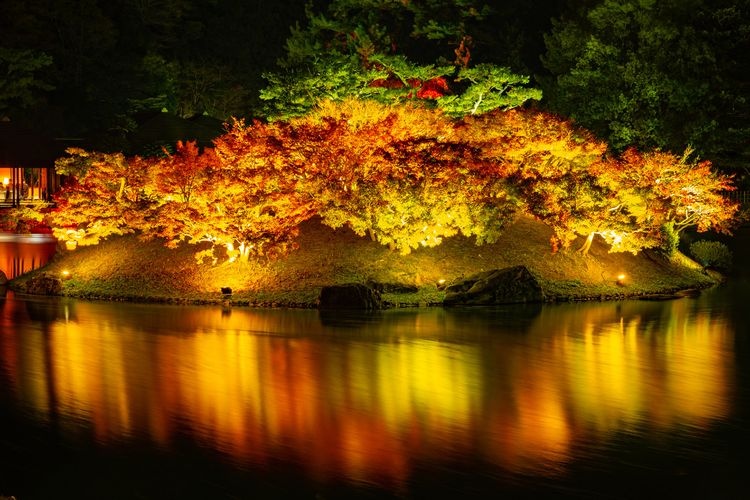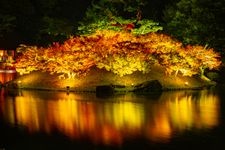Ritsurin Garden
menuMenu
Ritsurin Garden is a vast Japanese garden created during the Edo period. Its beauty lies in the stunning seasonal landscapes, picturesque ponds, artificial hills, and pine trees. Its beauty has earned it a prestigious three-star rating from Michelin.
















Highlights
- A vast Japanese garden created during the Edo period
- Stunning seasonal landscapes, ponds, artificial hills, and pine trees
- Michelin three-star rated beauty
- Breathtaking views from the artificial hill, "Hiryuho"
- Enjoy matcha and Japanese sweets at the Kugekutei teahouse within the garden
Basic Information
- Address
- 1-20-16 Kuribayashi-cho, Takamatsu City, Kagawa Prefecture Search for tourist attractions in Kagawa
- Access
- Approximately 7 minutes by car from JR Takamatsu Station, 20 minutes on foot from JR Takamatsu-Kotoku Line's Kuribayashi Station, 3 minutes on foot from JR Takamatsu-Kotoku Line's Ritsurin Koen Kita-guchi Station, and 10 minutes on foot from Kotoden Kotohira Line's Ritsurin Koen Station. 1-3 minutes on foot from the "Ritsurin Koen-mae" bus stop. Express highway buses stop here, except for overnight and Matsuyama express lines. Approximately 30 minutes by car from Takamatsu Airport, 20 minutes from Takamatsu-Nishi IC, and 15 minutes from Takamatsu-Chuo IC. Show route
- Op.Hours
- April - September 9:00 AM - 5:00 PM, October - March 9:00 AM - 4:30 PM
- Cld.Days
- December 29th - 31st
- Fee
- Adult 400 yen, Child 200 yen
- INFO
- The garden is quite spacious, so we recommend wearing comfortable walking shoes. While there are restaurants within the garden, you are also welcome to bring your own packed lunch. Pets are not allowed.
Overview
Recommended nearby attractions
Okayama Korakuen Garden

One of the Three Great Gardens of Japan. This stroll garden was created approximately 300 years ago, offering stunning seasonal views.
Kinsuien Garden

A stunning Japanese garden representing the beauty of Okayama Prefecture. Designed in the pond-style strolling garden style, it offers a breathtaking display of seasonal flowers and trees.
Toriryu Park

A peaceful park offering breathtaking views of the Seto Inland Sea and Sanuki Fuji. In spring, it's a popular destination for cherry blossom viewing with 1500 Someiyoshino cherry trees in full bloom.
Kinbuchi Forest Park

This expansive park boasts a stunning array of seasonal flowers, including cherry blossom trees, maple groves, and iris gardens. With athletic courses, campgrounds, and BBQ areas, there's something for everyone to enjoy all day long.
Asahiyama Forest Park

A park offering stunning panoramic views of Takamatsu city and abundant natural beauty.
Takamatsu Castle Ruins Tamamo Park

One of Japan's three great water castles, overlooking the Seto Inland Sea. While the main keep no longer exists, the stone walls and moats retain their historical character. Famous as a cherry blossom viewing spot.
Kametsuru Park

A breathtaking 300-meter cherry blossom tunnel, making it one of the best cherry blossom viewing spots in eastern Kagawa Prefecture.
Migo Plum Grove

A magnificent plum grove boasting approximately 16,000 plum trees in full bloom.
Sakutsu Park

A lush green park nestled between Kurashiki's canals. Known for its cherry blossoms, you can enjoy beautiful cherry blossom lines in spring.
Nearby Hotels
Hostel JAQ takamatsu

Up to11, 2Bldg.EXCL,Near the Sta.RitsurinKoen3min.

Comfort Hotel Takamatsu

TEN To SEN Guest House Takamatsu

Setouchi Mangetsu Sou

Super Hotel Takamatsu-Tamachi

Super Hotel Takamatsu Kinenkan

Dormy Inn Takamatsuchuokoenmae Natural Hot Springs

Takamatsu City Hotel

Jonah's Hostel

